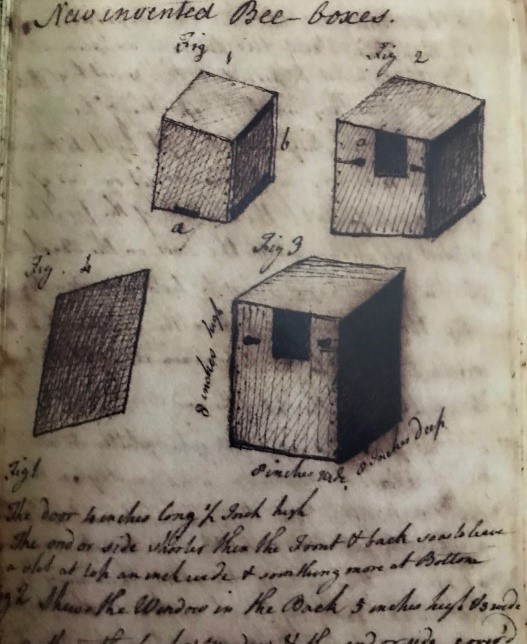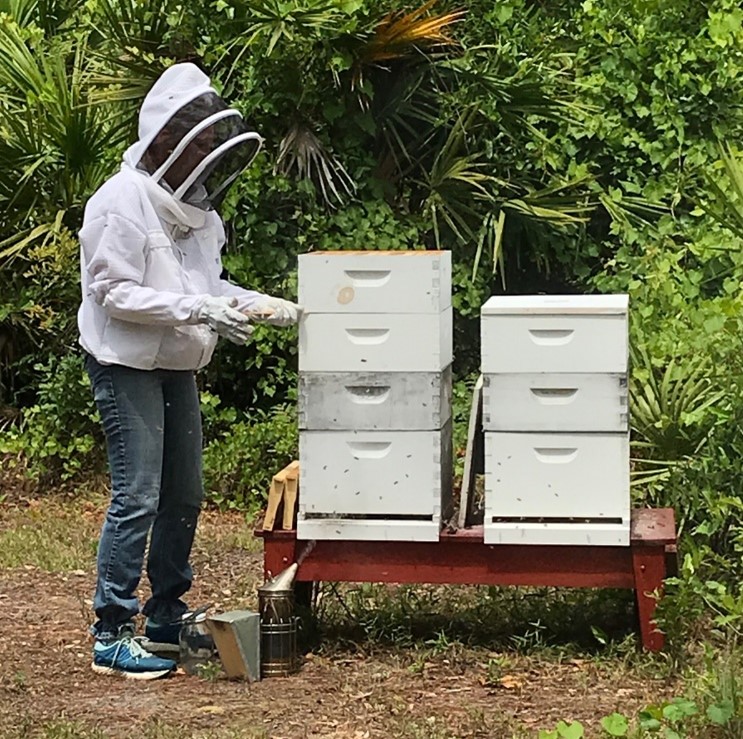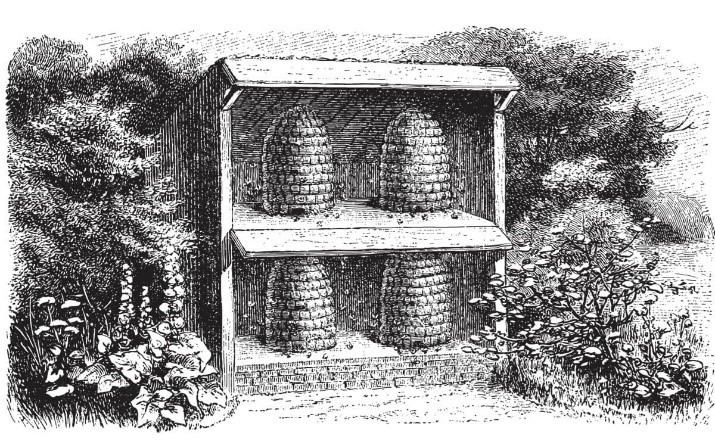William Bartram, American colonial naturalist, is best known for his 18th century botanical, writing and sketching skills of the Southeast colonies natural and cultural resources, published in his book “Travels, 1791.” However, he also experimented in beekeeping. Both he and his father, John, kept bees at their rural botanical garden, along the Schuylkill River outside Philadelphia in the Pennsylvania colony. They most likely kept them in the common straw “skeps” that were largely in use until the middle 19th century. Raising bees in skeps had one major drawback – to harvest honey the bees had to be killed.

Not wanting to kill his bees during the honey harvest, around 1768 Bartram prepared detailed notes and a drawing of a new beekeeping system in his “Commonplace Book.” This new system used three cube-shaped boxes placed side-by-side, with the aim of coaxing the bees from one box to the other to harvest honey. The modern movable frame hives, which were perfected in Philadelphia almost a century later by L.L. Langstroth, whose mid-19th century patent on hives became the basis for modern beekeeping today.

In our modern times, Bartram Trail Society of Florida member and apiarist (a fancy name for a beekeeper) Carole Adams, of Saturiwa Conservation Area, in Elkton, Florida, started her honeybee operation during the Corona virus pandemic. She has successfully harvested honey for 5 years and plans to continue for many years into the future.
